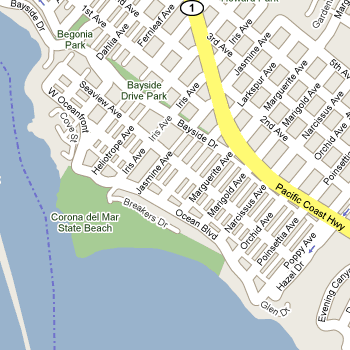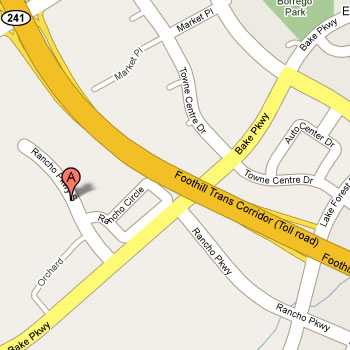FREE GROUP WORKOUTS (Week of October 12th)
All of our group workouts are free to members and non-members, so come on out!
We want everyone to enjoy our group workouts but we should clarify the intent. The intent of the group workouts is to “workout.” Yes, it includes a social element. Yes, your Triathica host is happy to give you tips. But please be aware that everyone there is attempting to get a workout in at his or her own pace. If we all go at the slowest person’s pace many people won’t be getting in a proper workout. We will attempt to pair you up with another athlete so you’re not left alone.
Week of October 12th
Event: Group Swim
Place: Triathica flag at Big Corona near the lifeguard station next to the jetty
Day: Wednesday, October 14th
Time: 5:30 p.m.
Planned Workout: 1 – 3 loops around the buoys
Event: Group Ride
Place: Triathica HQ
Day: Saturday, October 17th
Time: 7:00 a.m.
Planned Workout: Santiago Canyon Loop
Event: Group Run
Place: Triathica HQ
Day: Sunday, October 18th
Time: 7:00 a.m.
Planned Workout: Whiting Ranch Loop
OC TRI RACE REPORT
Jarrett Pfleiger
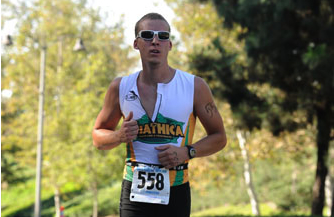 The Orange County Triathlon in 2008 was my first ever triathlon, so I was excited to see how I have improved over the last year. This would be my first time ever repeating a race in my young triathlon career. My training was anything but consistent over the last year, but I was confident that I had improved a little in fitness and a lot in knowledge, pacing, and race strategy, not to mention the quality of equipment I was using. Last year I rode the course on an old Fuji road bike with running shoes and no foot straps.
The Orange County Triathlon in 2008 was my first ever triathlon, so I was excited to see how I have improved over the last year. This would be my first time ever repeating a race in my young triathlon career. My training was anything but consistent over the last year, but I was confident that I had improved a little in fitness and a lot in knowledge, pacing, and race strategy, not to mention the quality of equipment I was using. Last year I rode the course on an old Fuji road bike with running shoes and no foot straps.
A few months out from the race on September 27th, I decided to dedicate my training and make this my “A” race and last one of the season. For a month, I was doing very well, then we started getting busier here at Triathica (definitely a good problem to have) and I had less and less time to train. About a month out from the race my training routine fell apart and I really only trained here and there when I could. I was still pumped for the race and excited for all the Triathica members who would be racing that weekend for the first time.
The night before the race I actually felt the best I ever had. My expectations were not high for the race so I was able to relax and have fun the next day. I got the best sleep I ever have before a race.
For breakfast I powered down a few snickers marathon bars that I got the day before at the expo. Those things are great! They literally taste like candy bars. I loaded all my stuff up in a borrowed truck (can’t really fit a bike in my Miata) and headed over to the race. Got to transition a little early and found a pretty good spot in transition. I brought my wetsuit just in case, but I thought it would be too warm to wear it. This turned out to be correct.
I walked around transition a bit and chatted with a few Triathica members I found. I felt really relaxed which is weird for me. I’m always pretty jacked up on race morning. One thing I was worried about was my goggle situation. I have a pair of dark and clear goggles. Clear goggles were the obvious choice for an early race start, but they got a little warped and I was worried about leakage. I brought both pairs down to the water and tested the clear ones. They seemed to hold up fine so I went back to my T1 area and put away my dark goggles. Probably something I should have tested days ago, live and learn.
It was very different not being the first wave since I’m usually in with the pros and the 29 and unders who normally start first. This time I was in the fifth wave, which was cool since I actually got to watch other people start.
I’m usually cautious on the swim start and try to stay away from the congestion. I’m gaining confidence in my swim so I decided to just go for it. When the horn blew I sprinted out in front and did a few dolphins. I was in front for probably the first minute of the swim until I settled into a good pace. I started to see people pass me, but I just stayed on my pace and tried to follow some feet.
After a while I started drifting to the right towards the course markers. Once I got right up next to them I adjusted and just used them to sight with until I hit the big buoy out in the middle of the lake. The rest of the swim went pretty smooth and after I rounded the first buoy, I started passing people in caps that were a wave or two ahead of me. Once I rounded the last buoy, I started seeing caps from the 2nd wave. I was sure I had a pretty good swim.
The bike portion went pretty well for me. I’ve had a problem in the past riding at too low a cadence and hammering too hard, wearing my legs out very quickly. This race I was concentrating on keeping my cadence high and spinning up the hills instead of hammering. I passed a lot of people on the bike and didn’t get passed all that much. There were a few guys I was going back and forth with almost the whole course. Guy in the pink jersey, you know who you are.
When I was nearing T2, I started getting ready to dismount and tried to move a Gu packet from my shorts to the back pocket in my tri top. Instead or reaching back and slipping it in the pocket, I slipped it under my race belt and it fell, skidding along the ground behind me. I didn’t panic because I felt pretty good and had downed a bottle full of Gatorade on the bike. The Gu was just for emergencies anyways.
I got off the bike feeling the best I’ve ever felt for the run. The first mile or two I felt really good. I held back a little because I knew what lay ahead. Even though I held back, once I hit those hills, I fell apart. I started getting these sharp pains in my lower quads and left hamstring. I had to walk/run up the steep hills and even walking was painful. I had no idea what was going on, but I kept thinking about my Gu packet sitting on the bike course by transition. It could have been a nutrition problem, but my body felt good, just my legs were killing me.
I struggled up Vista del Lago and once I got the top, my legs had had enough. My lower quads were searing and I felt like I needed to stretch them out. I lifted my left ankle up so I could grab it and stretch the quad. BAM! My hamstring tightened and I promptly fell to the ground, rubbing the grapefruit size ball on the back of my leg and trying to stretch it out. After a few minutes of rubbing and stretching I was able to straighten my leg. It sucks to watch people pass you, as you lay helpless on the ground. I think one or two people asked if I was OK, but everyone else was distracted with their own pain.
When I got up, I felt a little better as I started hobbling along. It still felt like I was going to cramp any minute, but it wasn’t as painful. I started to pick up speed and passed a lot of people that had passed me. One guy I ran past offered me some extra drink he had in his race belt. I thanked him and guzzled down a bottle in about two seconds. I’m not sure it helped, but it gave me the mental boost I needed.
I continued on and started to pick up speed on the downhills when I started having pain again. It was weird because the pain was only below my shorts, so I started moving them around a bit. It worked and the pain subsided temporarily. I came to the conclusion that my strategy of wearing double layers for the extra compression actually was cutting off circulation in my leg. I was almost done with the race so I just powered through it for the last mile.
The fact that the last half-mile of the course was all downhill made my day. I just cruised to the finish line and from my watch it looked like I beat my time last year by about 15 minutes.
I stuffed my face full of nutrition, got a sweet massage, and talked to bunch of other people about their race. I hated when people asked how my race went, I didn’t like explaining I was an idiot and died on the run, which could have been prevented. Oh well, I still had fun and there is always next year.
I ended up getting 18th in the 25-29 age group and finished in 2:33:13. I beat my time last year by about 15 minutes and lost a ton of time to cramps. Needless to say, I was very happy with my performance considering. Now it’s time to dedicate my training this off-season and come back with a vengeance next year.
OCEANSIDE COMPUTRAINER
Jarrett Pfleiger
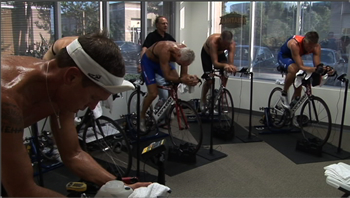 Calling all athletes competing in the Ironman California 70.3 in Oceanside on March 27th, 2010. If you are planning on doing well in this race, you need to know the course. Unfortunately, the majority of the bike course is on Camp Pendleton marine base and cannot be accessed except for race day. If you want to get familiar with the course and be successful on race day, we might have a solution for you.
Calling all athletes competing in the Ironman California 70.3 in Oceanside on March 27th, 2010. If you are planning on doing well in this race, you need to know the course. Unfortunately, the majority of the bike course is on Camp Pendleton marine base and cannot be accessed except for race day. If you want to get familiar with the course and be successful on race day, we might have a solution for you.
At Triathica, we have a room full of CompuTrainers that can simulate real courses around the world. You bring in your own bike, we set it up on the trainer, and the computer does all the work. Well you still have to work hard, but the CompuTrainer will adjust the resistance based on the course profile to make it feel like you are actually riding the course. You will have to shift gears and everything just like you were riding.
There are over 100 courses loaded in our system right now, and 70.3 Oceanside is one of them. We want to give everyone a chance to come in and ride the course to get a taste of what they can expect on March 27th. The CompuTrainer also measures watts, heart rate, cadence, and a lot of other data. If that means nothing to you, don’t worry. If you like analyzing numbers, these things are a techie’s dream.
We will be having a MultiRider ride of the course on Sunday, October 16th at noon. There are only six spots, so don’t wait to reserve your spot. Email Jarrett@triathica.com or call 949.273.6223. If you would like to come on another day to ride yourself or with a few friends, let us know.
COMMON SWIM STROKE FLAWS
Jarrett Pfleiger
 The swim is the one thing that strikes fear into most beginner triathletes. Many veteran triathletes still struggle to be competitive in this event also. The swim is a humbling experience for many beginning swimmers. Even the fittest athletes will be very winded after only a few laps in the pool if they have bad form. The freestyle stroke is similar to a golf swing in that you could have all the strength and power in the world, but if you have poor technique, you will not be very successful.
The swim is the one thing that strikes fear into most beginner triathletes. Many veteran triathletes still struggle to be competitive in this event also. The swim is a humbling experience for many beginning swimmers. Even the fittest athletes will be very winded after only a few laps in the pool if they have bad form. The freestyle stroke is similar to a golf swing in that you could have all the strength and power in the world, but if you have poor technique, you will not be very successful.
Swimming isn’t natural for humans and it takes more practice to master technique as opposed to cycling and running. Once you do master the technique, you will have a big advantage over other athletes who have not taken the time to refine their stroke. Even though there are many parts of a swim stroke that can be off, there are a few major mistakes most people make that, when corrected, can make a noticeable difference in swim speed and energy expenditure.
Next time you go to the pool, consciously think about your stroke and try to figure out if you make any of these mistakes.
Head position:
This is, by far, the most common mistake I see in athletes. The good news is that it’s also the one that gives the most benefit when fixed. While swimming, people tend to lift their heads too much, especially when breathing. When your head is tilted up in the water, you hips will drop lower in the water automatically. When your hips and legs drop in the water, you will create more surface area and will be plowing through the water instead of slicing through it like a torpedo.
Try to keep you head and neck in a neutral position, just like if you were standing straight up on land. Your face should be pointed to the bottom of the pool (ocean, lake, etc.) and your eyes should be looking ahead. You do need to see where you’re going, but look with your eyes, not your head. Keeping your head down will make your body more hydrodynamic and will help you go faster while expending less energy.
Body roll:
The old school way of swimming was to swim with your chest and stomach pointing down at all times and use your arms and legs to propel you. This is a recipe for shoulder problems, rapid fatigue, and slow swimming. Your body is most hydrodynamic while on its side, so incorporating more body roll into your stroke could work wonders.
When you take a stroke and extend your lead arm, try rotating on your side. When your right arm is extended, your chest will be pointing left. A complete 90-degree rotation isn’t necessary, but rotate as much as you can while still feeling comfortable. This should lift your shoulder out of the water and will make it easier to take your next stroke. When you do take your next stroke, you will rotate or “roll” to the opposite side. Just imaging you are on a giant BBQ skewer while you roll back and forth. This does not sound pleasant, but it is a good example of rotating on an axis.
This rotation will allow you to engage your core muscles, lats, and hips to generate more power and conserve your arms and shoulders. It will also make it easier to breath without lifting your head and causing your feet and hips to sink. Look up a few side-kick drill variations to help with feeling balance in the water on your side.
Kicking:
Focusing on kicking is not as necessary as some may think. Relatively speaking, kicking does not apply that much forward force to swimmers and uses a lot of energy. The last thing a triathlete wants to do is expend energy, especially in the legs, during the first portion of the race. If you do kick, make sure you are kicking correctly. I only kick for balance purposes and get little, if any, propulsion from my feet.
A lot of times I see swimmers’ legs separating and flailing around, kicking way too much, and bending too much in the knees. All this does is create additional resistance in the water. Keep kicks short, legs close together, knees only slightly bent, and ankles limp. Don’t point your toes unless you would like some calf cramping later in the swim.
Glide:
The swim should be smooth, fluid, graceful and almost easy compared to the pounding of the run and burn on the bike, but all too often people struggle most in the swim and are constantly battling the water. Don’t battle the water by constantly windmilling your arms, but glide through it like a fish.
After every stroke, pause for a moment or two with arm extended while on your side. With each stroke you also create forward momentum, which is wasted if you hurry to take another stroke before gliding a bit. This is free speed; take advantage of it and save energy.
Hopefully you will be able to recognize if you are making some, or all, of these mistakes. Don’t worry; these are not impossible to fix with the right drills and some practice. A good coach would be even better since they will be able to see what you cannot. Stop logging more miles in the swim, ingraining bad technique in your brain and muscle memory. Make the decision today to fix your stroke and become a whole new swimmer.
Here at Triathica, we have an Endless Pool that is perfect for swim coaching and video analysis. If you are serious about improving your stroke, swimming faster, and working less, give us a call to see how some swim coaching could take your racing to the next level.
BEGINNER TRIATHLETE CAMP
Jarrett Pfleiger
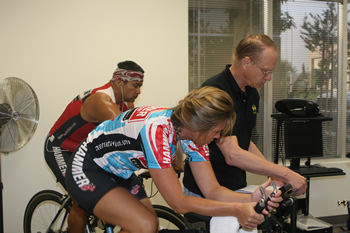 Thinking about doing a triathlon? Already done one, but want to know what you need to do to get better? Triathica is in the process of creating a triathlon camp for beginners that will help you reach your goals and give you the knowledge you need to not only finish, but also be competitive and have fun doing it.
Thinking about doing a triathlon? Already done one, but want to know what you need to do to get better? Triathica is in the process of creating a triathlon camp for beginners that will help you reach your goals and give you the knowledge you need to not only finish, but also be competitive and have fun doing it.
A Triathlon is one of the best ways to get and stay in shape. Once you sign up for a race, it is a constant motivator to keep you training hard. Your results don’t lie; it is the perfect accountability partner.
The camp will more than likely be held on a weekend and will cover topics such as swimming, cycling, running, transitions, race strategy, nutrition, safety, equipment, training, and much more. Stay tuned for more information about our beginner triathlete camp.


